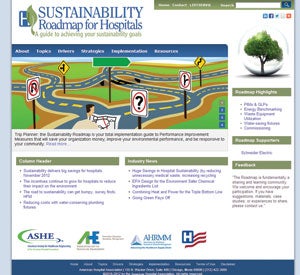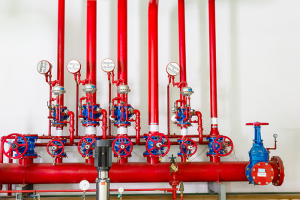Revamped website upgrades sustainability tools

A revamped version of the Sustainability Roadmap for Hospitals website that emphasizes how-to strategies and ways to measure progress was showcased last month at the American Society for Healthcare Engineering (ASHE) International Summit & Exhibition on Health Facility Planning, Design & Construction in San Francisco.
The original Sustainability Roadmap website was launched in 2010 as a collaborative effort of ASHE, the Association for the Healthcare Environment (AHE) and the Association for Healthcare Resource & Materials Management (AHRMM). The time was right for an update, says Dale Woodin, CHFM, FASHE, executive director of ASHE.
"The original site was a very effective resource that presented the value of beginning the journey of sustainability process improvement, but we also felt like we could go much further and deeper in developing specific tools and becoming a clearinghouse for proven strategies that immediately provide value," he says.
"Our focus in the redesign process was making these tools as robust as possible, while developing intuitive site navigation so members could easily access exactly what they need, when they need it," he adds.
Key changes and improvements include:
- A redesigned home page that highlights industry news and drives users straight to the latest tools and resources.
- Updated Green Light projects that offer guidance on how to achieve reachable goals for those new to sustainability.
- A new search feature that allows users to find the tools they need.
- A social media platform that encourages the user community to contribute to a discussion on ongoing improvements of sustainability tools and information.
- An enhanced E2C program that includes the Energy Efficiency Challenge and provides opportunities for awards and recognition.
The redesign provides the site with added "muscle" in the form of performance improvement measures (PIMs), which are designed to help users implement plans in the areas of energy reduction, water conservation, waste stream reduction and sustainable supply chain strategies, Woodin says.
Other PIMs are focused on even more advanced or complicated projects, but all PIMs include such valuable information and tools as:
- background, talking points and anticipated "triple bottom-line" benefits providing the incentives to implement the project;
- a how-to guide, including a step-by-step process to implementation;
- sample contract language for specifying environmentally preferable products and services;
- related codes, standards and regulatory considerations.
An energy management dashboard is in the works that will show E2C program participants their position in challenges in which they are participating to achieve energy sustainability compared with that of other facilities, the nation, within a region or within their health system.
Woodin says the intent of the original website was to communicate the importance of the sustainability journey and to encourage facility managers and directors to engage senior leadership.
The revamped site goes beyond that by demonstrating how to build cross-functional teams to target goals and achieve success, offering 10-step sustainability guides with varying degrees of difficulty and information on how to finance the program.
Woodin says ASHE, AHE and AHRMM each established task forces that contributed to tools included in the improved website and to "ensure that each is timely, relevant and of high value. The staff members of each society then worked to organize and refine each tool to produce the final product."
The three organizations worked closely with San Francisco-based consulting firm Mazzetti Nash Lipsey Burch in developing the site, he notes.




